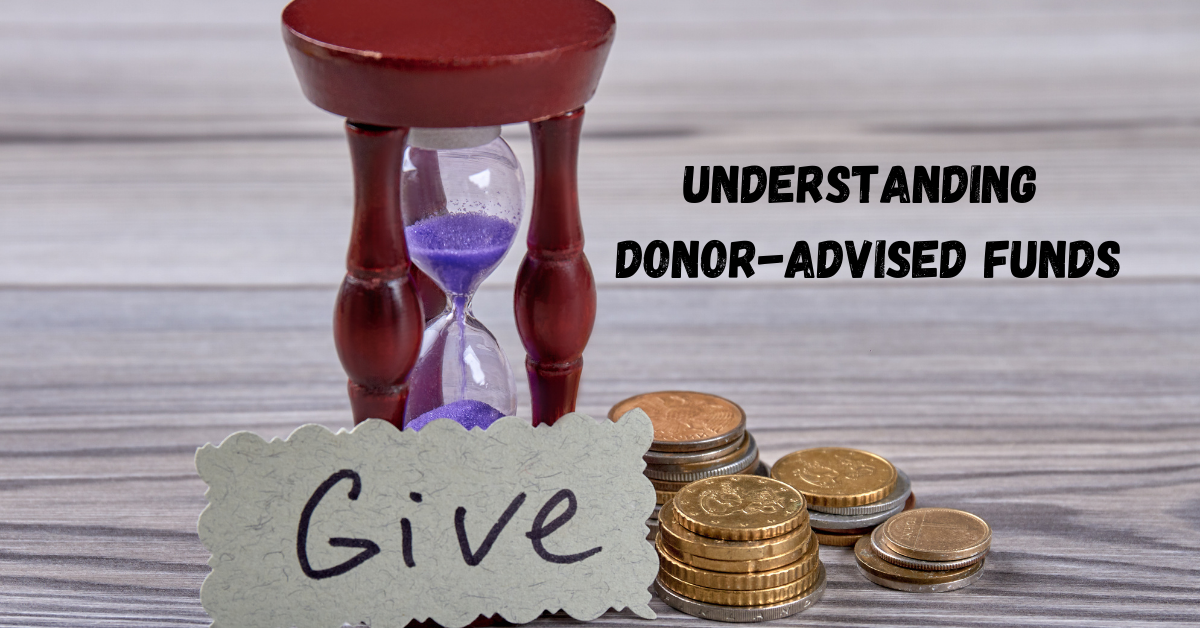You Don’t Have to be a Rockefeller to Manage Your Own Private Charitable Account
For generations, wealthy families with names like Rockefeller, Mellon, and Ford (and more recently Gates, Buffet, and Zuckerberg) have set up private foundations to give out money to charity.
The good news is you don’t have to be ultra-wealthy or own a Silicon Valley tech firm to set up your own private fund for giving money to charities. You can open a donor-advised fund. DAFs, as they are called, mimic many of the benefits of private foundations, but with fewer headaches and restrictions. Plus, you can open a donor-advised fund with as little as $5,000 – or even less with some sponsors.
As we move into the final months of the year, many of you are probably thinking about your year-end charitable giving strategy. Nationwide, 31 percent of all charitable giving for the year happens in December. Some charities rely heavily on year-end appeals to donors to make their annual budgets.
If you give regularly and generously to charities, you may want to consider establishing a donor-advised fund.
DAFs have been around since the 1930s, but it’s only in recent years that they have gained popularity.
Today, donor-advised funds are one of the fastest-growing methods for giving to charity. Nearly 900,000 individuals and families operate DAFs, with a total of $141.95 billion in assets. In the past five years, annual donations (referred to as grants) from DAFs to nonprofits have grown 93 percent to more than $25 billion, according to the National Philanthropic Trust (NPT).
DAF Benefits
Setting up a donor-advised fund allows you as a donor to make charitable contributions to the DAF and then make donations (grants) to one or more qualified nonprofits either that year or spread over future years. It gives the donor more control over how and when to disperse charitable gifts. In this sense, it is similar to a private foundation.
Other DAF benefits include:
- Unlike a private foundation, DAFs are easy and inexpensive to set up and administer. If you can complete the application paperwork to set up an IRA or brokerage account, you can set up a DAF. It’s that easy.
- Contributions to DAFs are tax deductible in the year they are made, even if the money is not granted to charity until a future year.
- Like a private foundation, you can name the DAF anything you want, such as the “Theodore F. Jones Family DAF.”
- Depending on the plan sponsor, non-cash assets such as stock certificates, real estate, and some collectibles may be contributed to a DAF, not just cash. Long-term appreciated assets contributed to a DAF avoid capital gains tax.
- Growth in DAF assets is not subject to income tax.
- DAF accounts may be transferred at the owner’s death to one or more beneficiaries, allowing the donor to continue to fulfill his or her charitable wishes even after death.
- Grants to charities may be kept anonymous, if preferred.
How DAFs Work
Here’s a hypothetical look at how a donor-advised fund can benefit you as a donor and the charities you wish to help.
To use the fictitious name above, let’s assume Ted and Sally Jones had a good year with their business income and investments. As the year draws to a close, they are concerned about their income tax liability. They own a common stock portfolio that is not part of a tax-sheltered retirement plan. It is worth $100,000 but has a cost basis of only $35,000, meaning they will have to pay capital gains tax on $65,000 worth of profit should they decide to sell the stock.
Ted and Sally have a heart for helping others. There are a few favorite charities they’d really like to help. Ted and Sally aren’t sure yet exactly how they want to divide this money among the charities, or on what time schedule to make the gifts. What they do know is that they need a large charitable tax deduction this year.
The solution: Set up the Theodore F. Jones Family DFA and donate the $100,000 stock portfolio to it. They get a charitable deduction for the gift which will help offset the extra business income they’ve made this year. Plus, they avoid paying capital gains tax on the sale of the stock.
Ted and Sally can now take their time to plan and execute their charitable-giving plans. When they are ready, they will make grants from the DAF to the charities of their choice. They could give it all in one year, but most DAF owners spread out their gifts over two or more years. For instance, the Jones family could give $10,000 per year to charity for 10 years, or $20,000 per year for five years, or really any schedule of their choosing. It’s their DAF and they are in control of it.
It’s important to note that since Ted and Sally received a charitable deduction for the entire $100,000 donation the year it went into the DAF, they do not receive an additional charitable deduction each time they make a grant to a qualified charity.
Criticism of Donor-Advised Funds
As DAFs have grown in popularity, so too has criticism about them. Two members of Congress have proposed reforms to donor-advised fund regulations, although their legislation is not expected to pass Congress this year. The primary complaint is that DAFs allow wealthy people to tax-shelter and hoard large sums of money and pay little or none of it to charity. Unlike private foundations, current rules do not require DAF owners to make annual grants to charity. In fact, in 2020, it’s estimated that as many as 35 percent of all DAFs did not make any charitable grants. The proposed legislation would require that DAF donations be distributed to charity in no more than 15 years from the time they are placed in the DAF.
How to Start a DAF
To start a donor-advised fund, you need a sponsoring organization that operates them. The largest ones include Fidelity Charitable, Schwab Charitable, Vanguard Charitable, the National Christian Foundation, and the National Philanthropic Trust. Hundreds of community foundations also offer DAFs. So do larger charities such as some universities and national healthcare charities.
Talk With Your Advisors
Especially for individuals and families with larger sums of money to donate, it pays to get professional advice before writing donation checks. DAFs are but one of many methods to make charitable gifts. They may or may not be the best solution for you. Talk with your Certified Financial Planner, CPA or tax advisor, and your estate attorney if you use one. They will help you develop a long-term philanthropic plan that best fits your needs.
To learn more about DAFs, see this article from NerdWallet.com.
Disclaimer: This story is written for informational purposes only and is not intended to offer professional legal or tax advice.








